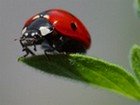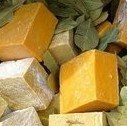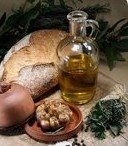Lowering Somatic Cell Counts in Cows
by Kenny
(Monroe, indiana, united states)
There are not many of us can haulers around to do bulk milk. And the state regulations sure don't help any but my question is about somatic cells.
How do I keeps my cows somatic cell down without the expensive vet coming to my farm all the time?
I also remembered something about bacteria. The faster you cool your milk off the longer it will keep. My Amish farmers have kept milk for two days in 90 degree temperatures, in just well water usually windmill driven. Some use gas motors.
I have another question how can the state regulate (smc) somatic cells, when that, along with bacteria, can and will vary ml to ml. Even with the most high-tech equipment I have witnessed it vary from 2000 to a million cells or bacteria per milliliter.
I hope I helped and maybe you can help me.
Sincerely,
The milk man (Kenny)
**************************************************
With regards to somatic cell counts in dairy cattle, the lower they are, the more healthy your cows are, which in turn, means that the environment they are in, is good. The inflammation of the udder causes large numbers of white blood cells (leucocytes) and epithelial cells to be released into the milk. It is these cells that are collectively known as somatic or body cells.
The somatic cells are higher just after calving, and they are as a result of mastitis, which of course is the inflammation of the udder. Mastitis however, can occur at any time, whether they are calving or not, and can be classified as Clinical Mastitis, where the udder is hot and swollen and your cow is definitely in some pain. Temperatures will be high, and the cow will be off her food, and generally looking pretty sorry for herself.
However, there is also other forms of mastitis, called Subclinical Mastitis, where there is inflammation to the udder, but it isn't noticeable. Everything looks normal, but when the milk is tested you have a high somatic cell count. This type of mastitis is common in 60-80% of all cases, and far more common than Clicinal Mastitis.
Mastitis is basically an enviromental disease, because the germs that cause it, are in the cow shed. There is no magical way of controlling it, but as I said, you can reduce it by making sure that bedding is regularly replaced, and water sources are clean. Keep your fly population down. Any dairy equipment used should be clean, and udders totally dry when milking begins.
Having said that, mastitis can also be caused by incomplete milking, or improper drying off when it is done too quickly.
Most mastitis is caused by germs entering the udder through the teat canal. Therefore the teats should be checked regulary for cracks, cupped teats, enlarged milk ducts, warts, cuts, scratches etc. that would allow the germ to enter.
Of course the milking machines themselves don't do the cows any favors either for mastitis and somatic cell counts. Often the vacuum rates and fluctuations causes the teats to be irritated, which in turn encourages infection. Using the milking machine on a cow with mastitis, followed by a healthy cow during the same milking session, without any cleaning in between, will result in spreading the infection.
Mastitis occurs when the dairy cow has few defenses agains infection due to either injury, or the sanitary or even mechanical aspects of the milking machines used, how the udders are handled during milking, the type of housing provided and any stress that the animal may be under, can all contribute to mastitis, which, in turn will result in a high somatic cell count.
Therefore, instead of looking at controlling the symptoms, we should be looking at the causes. Good management of your dairy cattle will always work in your favor of keeping the somatic cell count down.
So how do you test for this, without expensive lab tests or vet bills?
Firstly, you have to keep production records of your dairy cows and keep a sharp eye out for any loss in productivity from certain cows. Any cow that has Subclinical Mastitis could produce up to 25% less milk than usual. Long-term production records is one sure way of knowing what is going on with your cattle.
In the old days dairy farmers used a strip cup to examine the first lot of milk stripped from the teat to see if it had any clots, blood, shreds or other particles that would indicate a problem. If the milk was thin or watery or even yellow in color things were not right. This method is still used today in various places around the world and is a good way of doing a first screening. Testing the milk on a black plate or bowl, improves visibility.
However, although the strip cup tells you there is a problem, it doesn't give you any indication whether your milk falls within the acceptable range for somatic cell counts. Neither does the next test.
Farmers would also test the milk to see if it was acid or alkaline using the bromthymol blue test. The more alkaline the milk, the higher presence of mastitis. Again, this is still in use today.
Closer to home, you would have access to the California Mastitis Test (CMT), but again this is a screening test, along with a string of others, but doesn't give you the cell count you are after.
A more modern and accurate method is to buy yourself a somatic cell check kit. These are not expensive and depending on the brand you buy, will usually give you results within 10% of what a lab would give you, but for a fraction of the price.
In Australia, for example, they use the PortaSCC Somatic Cell Count Test - 24 test kit. In Australia at the moment, it only costs $55. It is simple and effective to use. You can use it on individual cows, or you can use it to test bulk milk cell counts in the same way.
This self testing kit can be used for both Clinical and Subclinical Mastitis. Basically you add your milk sample, then you add a couple of drops of the supplied activator, and then wait 45 minutes for the result. Depending on the severity of the somatic cell count, there will be a variety to the depth of color change in the reaction to the activator. You are then supplied with a color chart to determine what range your cell count is within.
There is also a reader that you can also use, if you wish through which you can insert your test strip and then your result must be multiplied by 1,000 000 to get your cell count. For example if you get a reading of .15, then your SCC will be 150, 000.
With regards to cooling milk quickly to reduce the occurrence of pathogens, you are right. Pathogen numbers double in the milk every 20 minutes. So the quicker you get the temperature of your milk down to 40 degrees F., the better.
(Can't see the Amish keeping the milk at 90 degrees F. This is too high, and not far off the temperature of freshly stripped cow's milk.)
This should never take more than an hour. The milk not only tastes better, and inhibits the growth of bacteria, but it also retards the ability of the milk to sour.
Of course pasteurizing your milk will also do this, but if you prefer raw milk, as I do, pasteurizing ends up not only killing bad bacteria, but good bacteria too!
Again, it comes down to environment. If your dairy cows are out on pasture all day and are only fed grass and hay, and have clean sleeping conditions, there will be a reduction to the chance of pathogens.
As a dairyman, you are responsible for the well-being of your cattle, as well as to the consumer to provide clean milk.
Home testing kits have their place, but it is not worth cutting corners when you suspect something more serious. Laboratory testing, or having your vet call, should never be done away with, as E.coli, listeria, salmonella, and staphaureus can all be passed onto the consumers if your milk is not properly screened.
Any milk that has a somatic cell count of more than 1,000 000 cells per milliliter is not fit for human consumption.
Regards
Kathryn
Countryfarm Lifestyles
Did you find this page helpful?
Sharing is a way of saying, "Thanks!"
Follow Us and Keep Up to Date
Go back to the Home Page





